Illinois Crop Update – May 10, 2024
Kathryn Seebruck – Commercial Agriculture Educator
Stephenson County
Soil Conditions: Moderately Wet (soil is damp, standing water may be present in low areas, water bodies are full)
Much like many areas of the state, northwest Illinois has received plenty of rainfall in the past couple of weeks, but there have still been enough dry days that have allowed for decent planting conditions. About 10-15% of fields in this area have visibly emerging corn, and planting is still ongoing. Low spots in some fields do have some standing water.
Emily Hansen – Commercial Agriculture Educator
LaSalle County
Soil Conditions: Moderately Wet (soil is damp, standing water may be present in low areas, water bodies are full)
Planting has paused due to wet conditions, but corn has started to emerge in fields that were planted earlier.
Russ Higgins – Commercial Agriculture Specialist
Grundy County
Soil Conditions: Severely Wet (ground is saturated, standing water is abundant, flooding may be present)
The start of another growing season! Limited field activity for nearly two weeks, our most recent precipitation event on May 7th will continue this trend. Planted corn is reaching V1 and planted soybean emerging, but plenty of seed can still be found in bags. Unworked or sprayed fields are full of winter annuals including Butterweed. Reports of significant alfalfa leaf feeding in regional hay fields. In the two most recent growing seasons farmers harvested almost 100% of planted acres with few drowned out areas, that is not likely in this region in 2024.
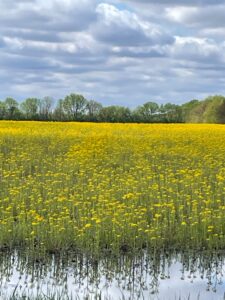
Figure 1: Untouched field, Butterweed
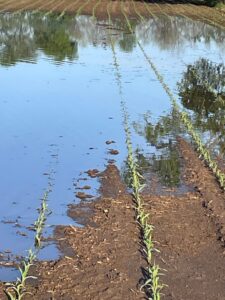
Figure 2: Wet field conditions and ponding
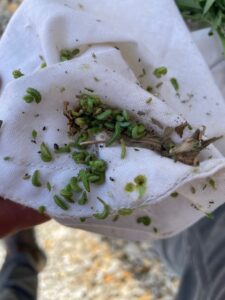
Figure 3: Leaf feeding, Alfalfa weevil larvae
Meagan Diss – Commercial Agriculture Specialist
Warren County
Soil Conditions: Moderately Wet (soil is damp, standing water may be present in low areas, water bodies are full)
Some farms have been able to take advantage of dry pockets to get out in the field. Fields are still pretty wet this week from multiple rain events but warmer temperatures will be helpful in drying out.
Rachel Curry – Agriculture and Agribusiness Educator
Knox County
Soil Conditions: Moderately Wet (soil is damp, standing water may be present in low areas, water bodies are full)
Those that were able to plant early are seeing emergence. The recent wet weather has created some planting challenges as farmers are trying to work around the stormy weather. The recent rain in west central Illinois has resulted in some standing water in fields and muddy field conditions.
Reagan Tibbs – Commercial Agriculture Educator
Logan County
Soil Conditions: Moderately Wet (soil is damp, standing water may be present in low areas, water bodies are full)
Rains over the last few days have prevented farmers from finishing planting their crop acres for 2024. The National Weather Service in Lincoln reported 0.38” of rain in the last 24 hours, and many low spots on fields have standing water. More rain is predicted for 5/7 and 5/8. Much of the soybeans and corn that were planted in mid-April have emerged. Soybeans in the area are in the VE growth stage, while corn in the area is in the VE to V1 growth stage.
Doug Gucker – Local Food Systems and Small Farms Educator
Dewitt, Macon, and Piatt County
Soil Conditions: Near Normal
The longest stretch of planting so far has been the week of April 10. Corn planted at that time is in the V1 stage approaching the V2, and soybeans are in the unifoliate stage. Rainfall the past week has ranged from less than. 0.5 inch to over 1 inch. Depending on the wetness of an area, there have been places that have had 3 or more days of planting.
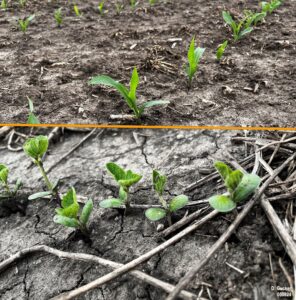
Figure 4: Corn and soybeans planted the week of April 10
Nick Seiter – Extension Field Crops Entomologist
Champaign County
Soil Conditions: Mildly Wet (soil is wetter than normal, local vegetation is healthy)
Reports of alfalfa weevil have been coming in pretty consistently for the last several weeks; we’ve now received reports as far north as Rockford. If you haven’t already, it’s a good idea to scout your alfalfa – look for defoliation (alfalfa weevil is the most likely culprit at this early stage) and confirm the continued presence of the small, green larvae before taking action. If you have a serious infestation and are in position to do so, consider cutting early to reduce the potential for further damage. Insecticide options are somewhat limited, and failures with lambda-cyhalothrin have been reported this spring.
Talon Becker – Commercial Agriculture Specialist
Vermilion County
Soil Conditions: Mildly Wet (soil is wetter than normal, local vegetation is healthy)
Conditions in central to southeast Vermilion County are a little dryer than we are a bit further west in Champaign County. I did not see any ponded areas in fields during my transect, although there were some low areas that were a bit on the muddy side. In that part of the county, approximately 30% of fields have emerged and another 30% has been recently planted. Of what has emerged, fields tended to be fairly evenly split between corn and soybeans, with possibly a few more corn acres out of the ground. Of the remainder, most no-till ground has been sprayed, with a few exceptions. Emerged corn and soy fields ranged from VE to V1-2 for corn and VE to VC for soybeans. I did stumble upon a couple wheat fields, both of which appeared to be at full flower or just past. I also found several cover crop fields in the south central part of the county, most of which had been terminated a week or two prior. The remaining cover crop fields I saw were likely recently sprayed or on the docket to be done soon, as I saw one rig running and the operator hoping for the rains to hold off a bit longer.
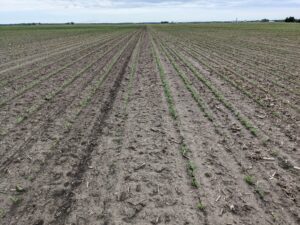
Figure 5: Adjacent corn (left) and soybean (right) fields at approximately V1 and VC stages, respectively.
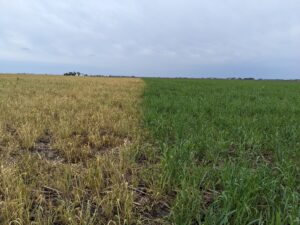
Figure 6: Cover cropped field with split termination timings.
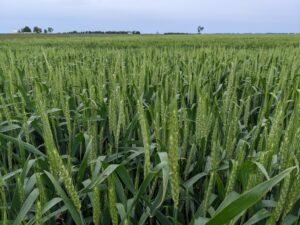
Figure 7: Wheat at anthesis (flowering).
Dane Hunter – Commercial Agricultural Specialist
St. Clair County
Soil Conditions: Moderately Wet (soil is damp, standing water may be present in low areas, water bodies are full)
Most acres still unplanted. This V4 corn is by far the largest I’ve seen. Other emerged corn is spiking-V2 at most. Have seen no beans emerged yet.
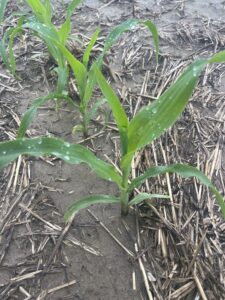
Figure 8: Corn plant at V4

Figure 9: Row of corn at V3-V4 showing some yellowing likely due to cold, wet soils.





